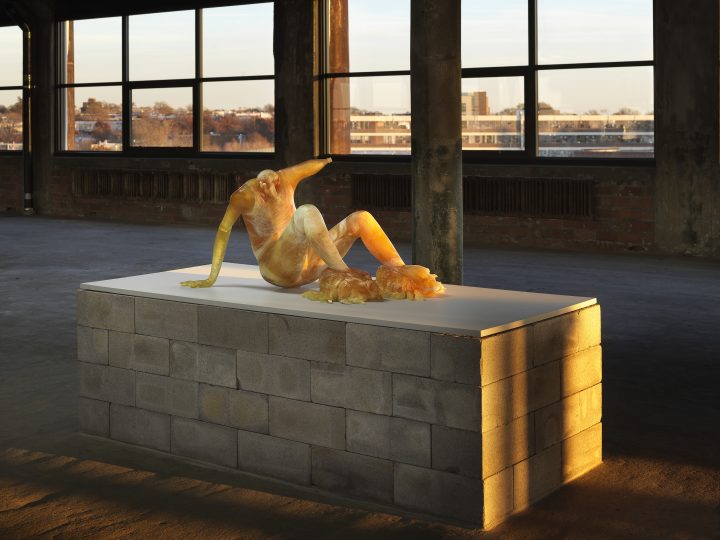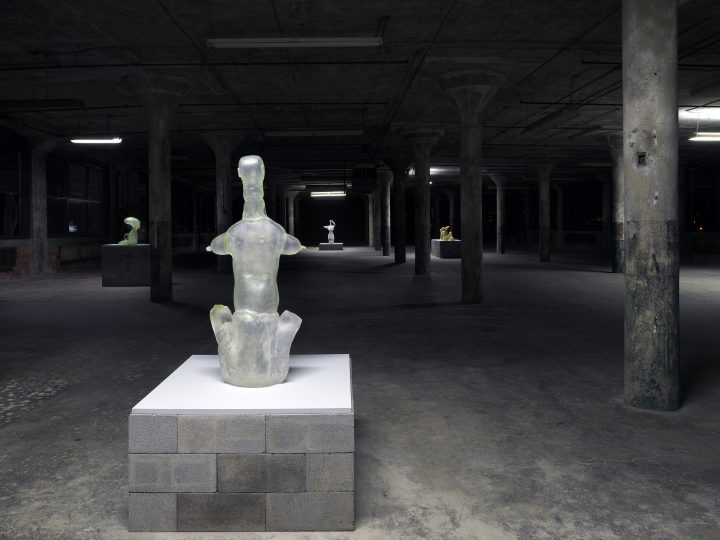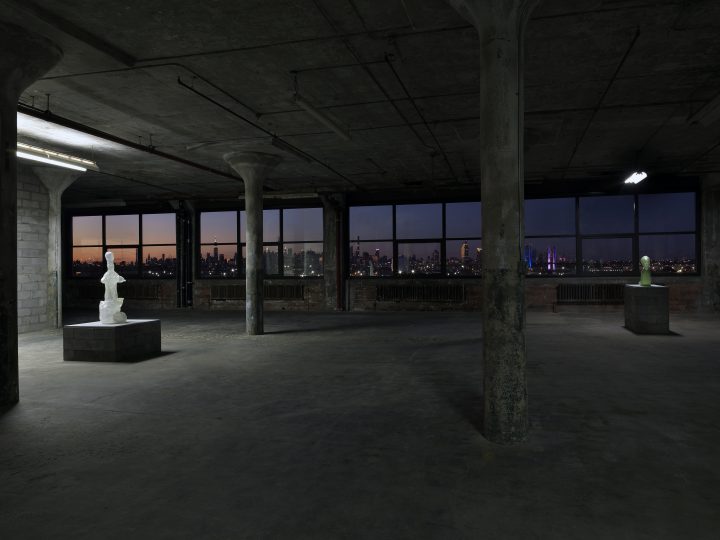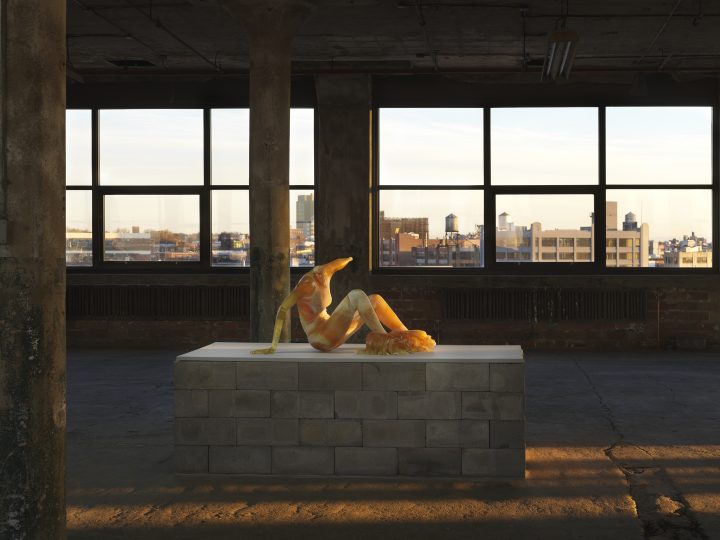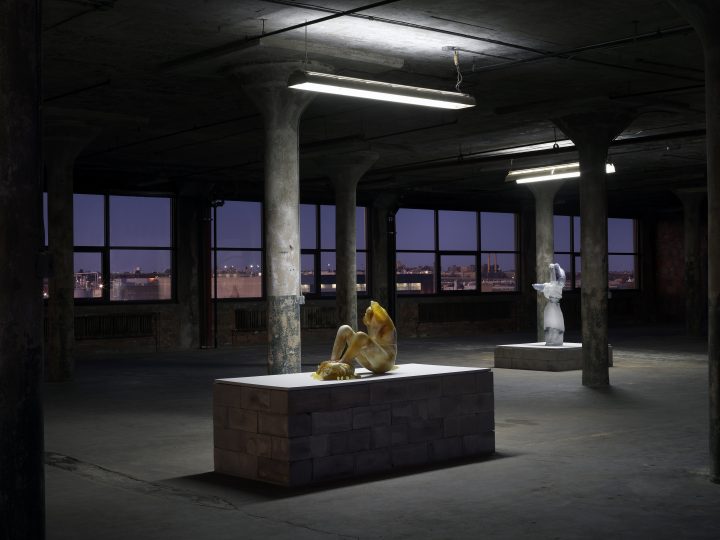While Ramiken Crucible’s space is undergoing renovation, Andra Ursuta has taken the opportunity to exhibit new work in an empty construction site one floor above the gallery. Situated in a part of Brooklyn littered with demolition sites and empty shipping containers, “Nobodies” feels especially conscious of waste. The exhibition is made up of a series of large “self-portraits” cast in glass from the artist’s own body, old clothes, and trash accumulated in her studio. Though the colorful glass sculptures take the form of totem-like structures, they really function as containers, each with a soda bottle opening that in some cases departs from a shoulder socket and in others suggests a phallus or twin exhaust pipes. The emptied vessels yearn to be filled — an intimation unavoidably paired with an accompanying sense of dread. They are solid, weighed down, yet translucent and bright in the bleak space they occupy. In one of the works, the “head” of the body takes the form of a zipped-up hoodie that, when cast in glass, looks like a plastic bag pulled over someone’s face. This suffocation feels central to the show. Moreover, the process through which the sculptures are made shows an ambivalent relationship toward progress: a desire to move past history, coupled with a fear of moving too fast. Ursuta begins by 3-D scanning the components that then get cast into glass using an ancient sculptural casting technique in which wax molds melt away, leaving behind a more solid form. There is an element of chance as well, as the process only came about when Ursuta coincidentally moved into a studio next to a 3-D printing lab. The objects feel uniquely personal to Ursuta, but their components lose their specificity when constructed into contiguous figures. While she may have worn the clothes and drank from the bottles, they might as well be anyone’s once they’ve been transposed to 3-D scan or nylon mold. Reconstituted within sculptures, they come to stand as individual parts of idols within this specific historical context. This is why the work is also rife with cultural references: one work is titled Predators ‘R Us; another includes a sculptural detail from the film Alien. As much as it’s about Ursuta’s real fears and anxieties, she also seems concerned with how pop culture figures fear: a ski mask lined with bullets; the cranium of H. R. Giger’s xenomorph placed on Ursuta’s head like a beanie; a knife plunged into a “neck” made of the top part of a lace-up boot.
27 December 2019, 8:00 am CET
Andra Ursuta Ramiken Crucible / New York by Danielle Bruce
by Danielle Bruce December 27, 2019
More stories by
Diamond Stingily Ramiken Crucible / Los Angeles
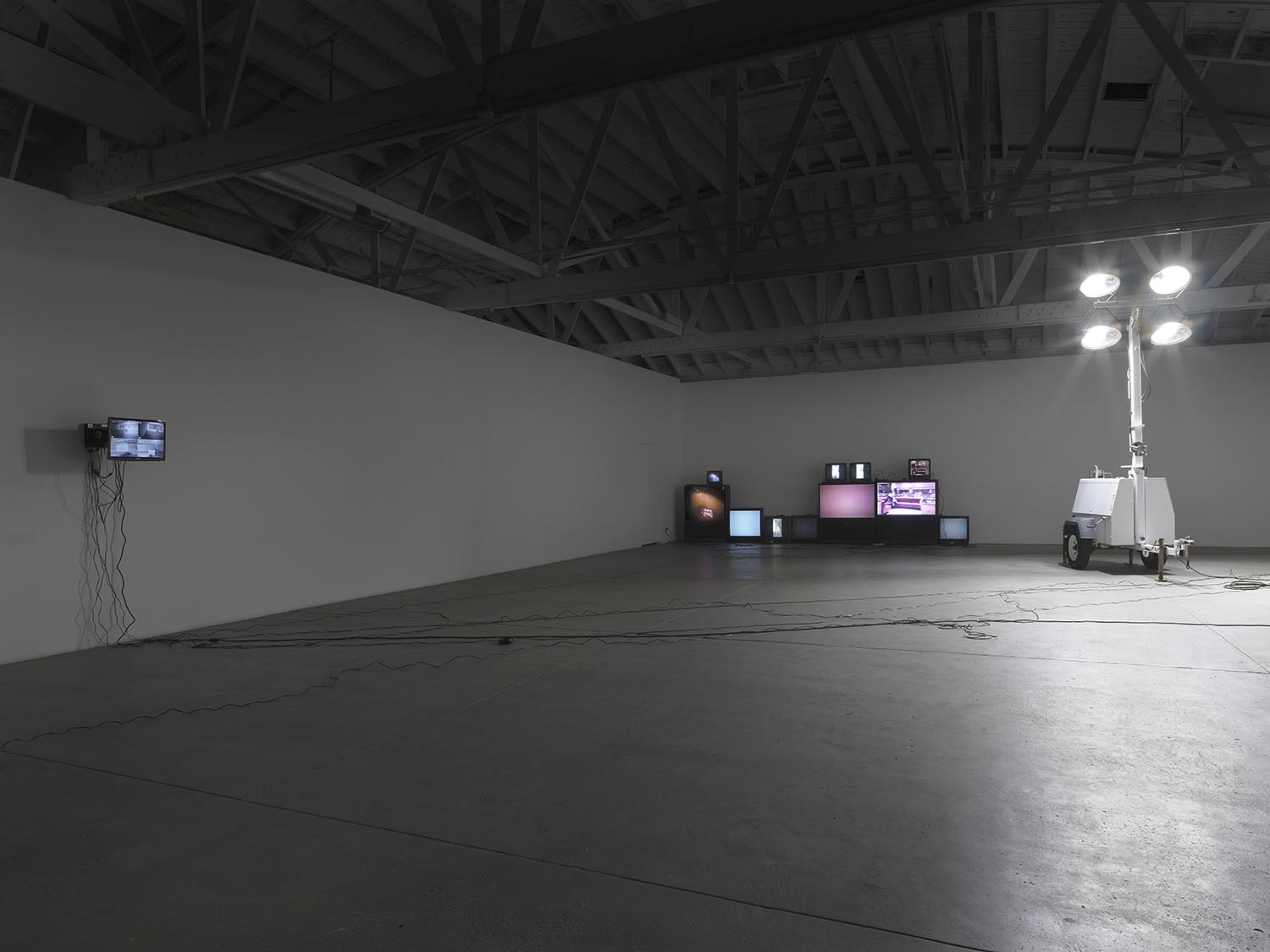
Despite being indoors, the show is lit solely by the kind of big mobile floodlights that feature in eerie drive-bys…
Kusama fever hits New York
New York will be covered in spots in the next few days. The retrospective of Yayoi Kusama opens on July…
Nordic culture in New York
This year The Armory Show’s third edition of the invitation-only Armory Focus has turned its attention to the Nordic countries.
New York City Artists Unite to support the Rockaways and the flooded areas of New York City
An Open Letter to Encourage Mutual Citizen Support:

